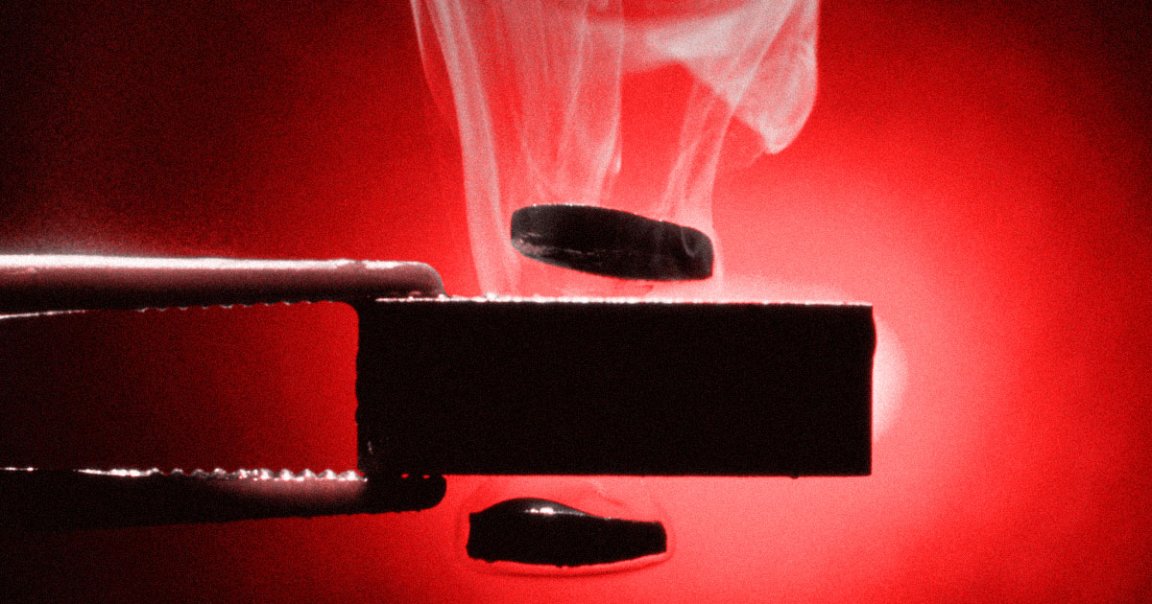
A team of researchers at the University of Rochester claims to have achieved a “historic” breakthrough by creating a superconducting material at both room temperature and feasible levels of pressure — something that could potentially lay the groundwork for the mass adoption of the tech.
“With this material, the dawn of ambient superconductivity and applied technologies has arrived,” said University of Rochester assistant professor of mechanical engineering and physics Ranga Dias, lead author of a new paper published in the journal Nature, in a statement.
But Dias’ track record — a previous paper in which he and his team claimed to have produced a similar room temperature superconductor was retracted by Nature back in 2022 — throws a shadow of doubt on the latest claims, something that will likely lead to enhanced scrutiny of his newest research by the scientific community.
Superconductivity is a state of matter that can expel magnetic fields and eliminates electrical resistance. Superconducting magnets are already being used in MRI machines, mass spectrometers, and particle accelerators.
They also allow scientists to contain superheated plasma inside donut-shaped tokamak reactors, which are used to conduct fusion energy research.
Despite over a century of research, scientists have struggled to maintain superconductivity at more easily attained temperatures and pressure levels. The current crop of superconducting materials typically has to be kept at extremely low temperatures, well below -320 degrees Fahrenheit, making them difficult, impractical, and costly to maintain.
Now, Dias and his colleagues claim to have produced a material in the form of a “nitrogen-doped lutetium hydride” (NDLH) that exhibits superconductivity at a balmy 69 degrees Fahrenheit and ten kilobars (145,000 psi) of pressure.
That may sound like a lot, but microchip factories already commonly produce such levels of pressure, according to the statement.
In an effort to produce their superconducting material, the team looked at the rare earth metal lutetium, which in the presence of nitrogen provides enough stability for superconductivity to occur at much lower levels of pressure.
The resulting material, dubbed NDLH, turned from a “lustrous bluish color,” according to the paper, to pink and finally red once huge amounts of pressure were exerted on it in a diamond anvil cell, a device that can compress tiny pieces of material at extreme levels of pressure.
“It was a very bright red,” Dias recalled in the statement. “I was shocked to see colors of this intensity. We humorously suggested a code name for the material at this state — ‘reddmatter’ — after a material that Spock created in the popular 2009 Star Trek movie.”
The researcher believes the mysterious substance could open the doors for “superconducting consumer electronics, energy transfer lines, transportation, and significant improvements of magnetic confinement for fusion” energy.
Dias also said that the material could even allow tokamak reactors to achieve fusion, an eyebrow-raising claim given the industry’s struggles in turning the idea into a viable source of renewable energy over the last 50 or so years.
Yet there are reasons to be skeptical of the researchers’ claims. A previous paper published in Nature back in 2020, in which Dias and his team claimed to have produced a superconducting material made out of hydrogen, sulfur and carbon at room temperature, was retracted by Nature editors in 2022, who raised issues with the experiment’s controls and repeatability.
“We have now established that some key data processing steps… used a non-standard, user-defined procedure,” the editors wrote in their retraction. “The details of the procedure were not specified in the paper and the validity of the background subtraction has subsequently been called into question.”
Jorge Hirsch, a theoretical physicist at the University of California, San Diego, also noted that their data looked suspiciously similar to that published in a 2009 paper, as Science reported back in 2021.
Hirsh told ScienceNews last year that Dias and his team refused at first to give him the raw data.
“The authors said, ‘No we cannot give you the data because our lawyers said that it would affect our patent rights,'” he said.
Once he was able to get his hands on the data thanks to intervention from Nature, Hirsch found that “there were real problems between the raw data and the published data.”
Hirsch and physicist Dirk van der Marel of the University of Geneva later published a commentary paper in which they accused Dias and his team of “fabricating” the data, claims that Dias has refuted since.
Now, following the publication of their latest paper, the researchers claim that they’ve done their homework, painstakingly documenting their research and publicly demonstrating their new superconducting material at the Argonne and Brookhaven National Laboratories.
Whether that will be enough to appease scientists, who will now have a chance to closely examine the new paper and Dias’ claims, remains to be seen.
Dias, for his part, stands firmly behind his and his team’s latest findings.
“We believe we are now at the modern superconducting era,” Dias said in the statement.
More on superconductors: US Military Files Patent for Room-Temperature Superconductor